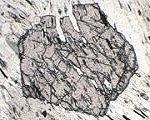Practical Aspects of Mineral Thermobarometry
2. Chemical Mineralogy of Common Mineral Groups
This section examines the crystal chemistry of some common mineral groups. For each, we shall consider some or all of the following:
- the sites in the crystal structure on which the principal substitutions take place,
- the typical ranges of observed composition variation,
- how to assess the quality of analyses from looking at the stoichiometry of mineral formulae,
- how to estimate ferric iron,
- any special considerations affecting formula recalculation
In describing the variation of mineral composition, particularly for complex phases such as amphiboles, we shall find it very useful to think in terms of end members (phase components) and substitution vectors.
Formula recalculation, including ferric iron estimation
Introduction to end members and phase components
Mineral Groups
The aim here is not to be exhaustive, but to illustrate the range of crystal chemical features, and tricks of formula recalculation, that you may need to consider.
- Garnet
- Plagioclase
- Pyroxene
- Mica (muscovite and biotite)
- Amphibole (mainly about hornblende)
Sources and further reading
- Deer, Howie and Zussman (1991) An Introduction to the Rock-Forming Minerals. Longman.
- Putnis A. (1993) Introduction to Mineral Sciences. Cambridge University Press.
- Spear, F.S. (1993) Metamorphic Phase Equilibria and Pressure-Temperature-Time Paths. Chapter 4, Crystal chemistry of rock-forming minerals. Mineralogical Society of America monograph.
This page last modified 12 October 2004
